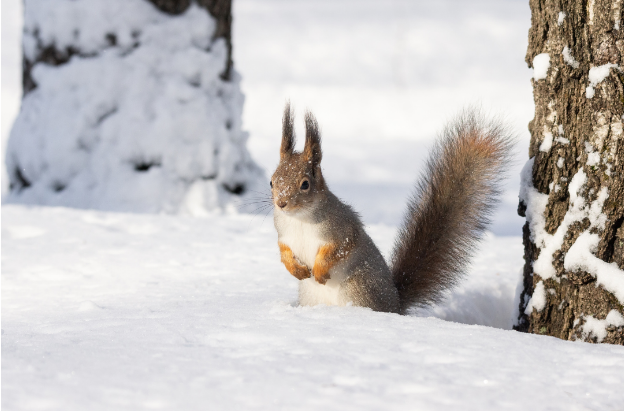YERC Publication Spotlight: Recent Findings Suggest Adding Red Fox to Climate - Threatened Whitebark Pine Trophic System - Patrick R. Cross and Robert L. Crabtree Canadian Journal of Zoology
Red Fox
Patrick Cross - former YERC Program Director and Wildlife Scientist - along with YERC’s Chief Scientist Dr. Robert Crabtree recently published findings on the importance of whitebark pine as an important food source for red fox. Because whitepark pines are threatened by climate change and in decline due to a disease and bark beetles, these findings suggest considering red fox in conservation efforts related to climate change in mountain ecosystems in Greater Yellowstone.
Whitebark pine trees are a keystone species in the Greater Yellowstone Ecosystem and are threatened by climate change impacts, especially related to drought and declining snowpack. In the past, scientists have predicted whitebark pines will lose 70% of their habitat by 2099 and in some locations they have already been reduced by 95%. In a major publication YERC gathered an enormous amount of long-term data from agencies, organizations, and from their own efforts to build a model that predicted decline much sooner (~ 2050) than 2099 and similar to that observed in western Montana and central Idaho. Since then bark beetle outbreaks and declining snowpack further threatens this sensitive alpine ecosystem.
These trees live at high elevations and provide over 20 animal species with nutrition through their seed production. They also exhibit a characteristic called masting, which means some whitebark pine populations irregularly and synchronously produce a large amount of seeds two to three times per decade; this action is a survival mechanism that enables the population to have an overabundance of seeds for the coming year.
Red Squirrel
The red squirrel is one species that utilizes whitebark pine seeds for nutrition during the winter months. They store them in middens, a pile of seeds and pine cone debris at the base of trees that accumulate from late summer to winter. This midden serves as a food source for the squirrels through the winter.
A subspecies of red fox living year round in the alpine zone (observations at 11,000 ft) have been observed to use these middens as a food source in the winter and they forage on the red squirrels' stores of seeds. These seeds contain twice the dietary energy of meat and are incredibly useful sources of energy during the winter months. The observance of red foxes utilizing white bark pine seeds is a new occurrence that gives researchers clues to how the whitebark pine affects trophic systems within the Greater Yellowstone Ecosystem.
While conducting challenging field work in the middle of the winter high up on the Beartooth Plateau, Cross first observed this red fox behavior following a masting year. He was prompted to do further research regarding the red fox’s behavior following masting years and if they would have increased use of mature subalpine forests where seeds are most prevalent.
Months of conducting research by snow tracking and radio-tracking red foxes determined the importance of red squirrel middens. This added evidence to the claim that whitebark pine seeds are an important food source of nutrition yet another key species as these mountain red foxes are the resident apex predator in the alpine zone. Further conservation focus is needed on this species as part of the threatened whitebark pine trophic system.
Cross recommends further study to help us understand their role in critical whitebark pine ecosystems. Whitebark pine holds a delicate food web in balance and future research, and most importantly, monitoring is needed to further understand the impacts a declining whitebark pine population will have in the Greater Yellowstone Ecosystem.
Want to learn more? Check out other select publications.
Abstract below:
Mountain ecosystems are sensitive to climate change, and climate-driven declines in primary producers can impact food webs. Whitebark pine (Pinus albicaulis Engelm.) seed, a valuable food resource for montane wildlife species, is threatened by climate change. Whitebark pine exhibit masting, and during a snow-tracking study of Rocky Mountain red foxes (Vulpes vulpes macroura Baird, 1852) in the Greater Yellowstone Ecosystem that happened to coincide with masting, we unexpectedly observed red foxes consuming whitebark pine seeds from red squirrel (Tamiasciurus hudsonicus (Erxleben, 1777)) middens. Seed production then decreased the following year. To investigate whether whitebark pine seed availability affected winter foraging and habitat use by Rocky Mountain red foxes, we assessed interannual variance in our dietary and habitat use data. We found both seed consumption and use of habitats where seeds were available also decreased during the non-mast winter. Given the limitations of our small-scale, opportunistic analysis, we suggest that whitebark pine seeds may be an important food resource for montane red foxes and that their relationship warrants further research and consideration in conservation efforts for both species.


